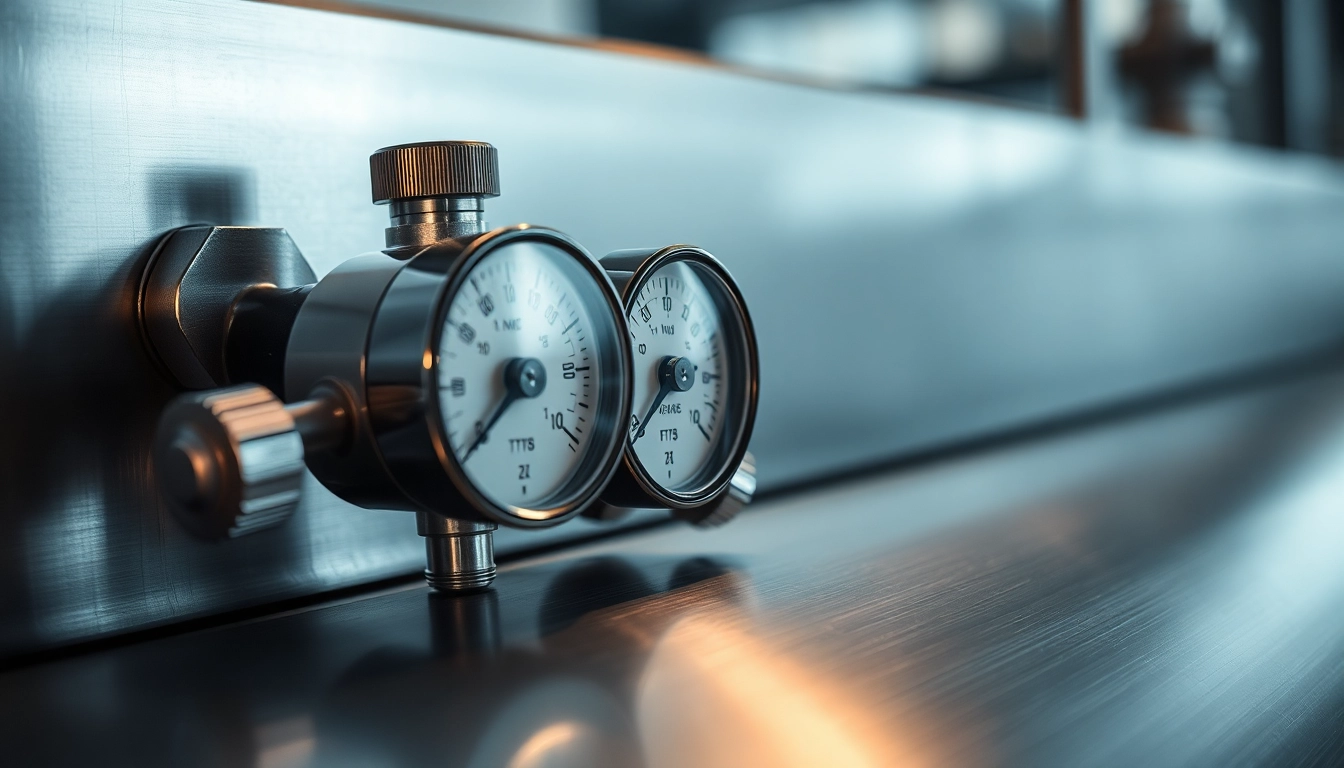Understanding Nitrogen Regulators
What is a Nitrogen Regulator?
A nitrogen regulator is a device that controls the pressure and flow of nitrogen gas from a tank or cylinder to a connected system. Effectively managing the flow of nitrogen is key in numerous applications, ranging from industrial processes to HVAC systems and even brewing. The ability to regulate the gas ensures that precise amounts are delivered at the appropriate pressure, enhancing overall system efficiency and longevity. This importance is reflected in the wide range of nitrogen regulators available in the market, each designed to cater to specific needs and applications. For a diverse selection of nitrogen regulators, you can visit nitrogen regulator sections online.
The Importance of Proper Pressure Control
Controlling the pressure of nitrogen is crucial for safety and performance. If the pressure is too high, it can lead to equipment failure or even hazardous situations, such as leaks or explosions. Conversely, insufficient pressure can cause the system to operate poorly, yielding inadequate results whether in manufacturing, refrigeration, or food processing. Therefore, proper nitrogen pressure control enhances not just operational efficiency but significantly contributes to workplace safety.
Key Components of a Nitrogen Regulator
Nitrogen regulators consist of several critical components that contribute to their functionality:
- Inlet Connection: This is the entry point for nitrogen gas from the cylinder, typically designed to fit specific tank fittings such as CGA580.
- Pressure Gauge: This displays the outgoing pressure, giving operators a clear view of current operational conditions.
- Adjustment Mechanism: This component allows users to set the desired outlet pressure. It can be manual or preset depending on the type of regulator.
- Outlet Connection: This is where the nitrogen exits the regulator and is delivered to the intended application, often with various fittings to ensure compatibility.
Types of Nitrogen Regulators Available
Single Outlet vs. Dual Outlet Nitrogen Regulators
Nitrogen regulators can be categorized into single outlet and dual outlet types. Single outlet regulators are straightforward and ideal for applications requiring one nitrogen source to control. They are often simpler and less expensive. On the other hand, dual outlet regulators offer flexibility by allowing the user to supply nitrogen to two different systems simultaneously. This configuration is particularly useful in larger setups or in facilities where multiple users or processes need nitrogen concurrently, common in industrial settings.
Adjustable vs. Preset Regulators
Another significant classification is between adjustable and preset nitrogen regulators. Adjustable regulators allow users to change the outlet pressure according to specific requirements, providing versatility for various applications. These are excellent for environments where demands may vary, such as HVAC systems. Conversely, preset regulators come calibrated to a specific pressure setting ideal for standard operations, making them convenient for repetitive tasks, like in some food and beverage industries, where standardization is critical for product quality.
Choosing the Right Type for Your Needs
When selecting a nitrogen regulator, it’s essential to assess the specific requirements of your application. Consider factors such as the required pressure range, the nature of the process, and whether multiple systems need to be served. For instance, a brewery might opt for a dual outlet adjustable regulator to manage different pressures for various beverage types, ensuring optimal quality. In contrast, a small HVAC setup might be well-suited to a single outlet preset regulator to keep operations simple and reliable.
Applications of Nitrogen Regulators
Uses in HVAC and Refrigeration
Nitrogen regulators play a critical role in HVAC and refrigeration applications by controlling the pressure and flow of nitrogen used in pressure testing and purging units. Proper use of nitrogen enhances system performance and longevity, ensuring that any maintenance or repairs are performed without introducing air or moisture, which can cause corrosion and inefficiency.
Applications in Brewery and Beverage Industries
In the brewing and beverage industries, nitrogen regulators are essential in delivering consistent carbonation and maintaining the quality of draft beer and nitrogen-infused products. The capability to finely tune the pressure delivered to the keg helps in achieving the right amount of fizziness in beverages, which is crucial for customer satisfaction and product standards.
Industrial Uses of Nitrogen Regulators
Nitrogen’s inert properties make it invaluable in various industrial applications, including metal fabrication, food preservation, and chemical production. Nitrogen regulators ensure that the flow of gas meets the specific requirements of each process. For instance, in chemical manufacturing, a stable nitrogen flow can prevent oxidation and enhance the quality of the final product.
Best Practices for Using Nitrogen Regulators
Installation Guidelines
Proper installation of nitrogen regulators is essential for optimal performance. Start by ensuring that all connections are clean, undamaged, and appropriate for the nitrogen tank outlet. Always adhere to the manufacturer’s instructions when mounting the regulator. Additionally, ensure that the regulator is mounted in a location that is easily accessible for maintenance and adjustments.
Operating Procedures to Ensure Safety
Safe operation of nitrogen regulators involves adhering to several fundamental guidelines. Always inspect the regulator before use to check for wear or damage. Ensure that all connections are tight to avoid leaks. When adjusting pressures, do so slowly and cautiously, and always wear appropriate personal protective equipment (PPE) to mitigate risks. Regular training for operators on the equipment’s functionalities and safety protocols should also be a priority to minimize accidents.
Common Mistakes to Avoid
Many users inadvertently make mistakes that can compromise the effectiveness or safety of nitrogen regulators. Common errors include:
- Neglecting regular maintenance checks, which can lead to performance decline.
- Improperly adjusting pressure settings, which can cause equipment damage or inefficiency.
- Failing to keep hoses and fittings clean, risking contamination of gases.
- Using incompatible components, which can lead to leaks or failures.
Maintenance Tips for Longevity
Routine Checks and Tests
To ensure that a nitrogen regulator lasts, routine inspections and functional tests should be performed. Regularly check the pressure gauges for accuracy, inspect all connections and fittings for leaks, and monitor the performance of nitrogen delivery to ensure it’s within desired specifications. Keeping a maintenance log can help track performance over time and identify any issues early.
Cleaning and Care for Optimal Performance
Cleansing components like hoses and fittings not only extends the life of your regulator but also helps maintain quality in delivered gases. Utilize appropriate cleaning agents and techniques safe for your specific equipment. Avoid abrasive materials that can cause damage and always follow the manufacturer’s guidelines for cleaning to prevent voiding warranties.
When to Replace Your Nitrogen Regulator
Understanding when to replace a nitrogen regulator is vital. Signs of wear may include leaks that cannot be fixed, significant corrosion, or malfunctioning pressure gauges. Additionally, if the regulator consistently fails to maintain the desired pressure settings, replacing it should be considered to maintain system integrity and efficiency.


